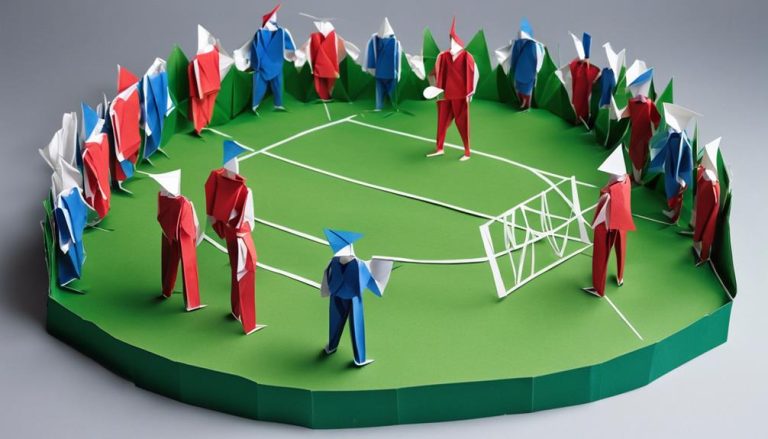General Rules of Horse Racing
Get ready to embrace the electrifying world of horse racing! Thoroughbreds and Quarter Horses showcase unique skills on the track. From interval training to hill work, diverse methods boost horse fitness. Track conditions like firm or wet impact their performance. Skilled jockeys are like master chess players, adapting tactics swiftly for victory. The right gear – saddles, bridles, blinkers, and racing plates – enhances communication and performance. Safety measures and track maintenance are vital for a safe racecourse. Start your journey into the mesmerizing world of horse racing and discover a treasure trove of knowledge on this exciting sport.
Types of Horse Racing
When entering the world of horse racing, it's essential to grasp the different types of races that occur. From the majestic Thoroughbreds to the sturdy Quarter Horses, each breed brings its unique strengths and qualities to the track. Understanding these breeds allows you to appreciate the diversity and excitement they bring to the sport.
Training methods also play a significant role in the success of a horse on race day. Whether it's interval training, long slow distance, or hill work, each method contributes to the horse's overall fitness and performance. Knowing how a horse has been trained can give you insights into its potential in a race.
Track conditions, such as firm, good, or wet, can drastically affect a horse's performance. Some horses excel in certain conditions while others struggle. By paying attention to the weather and track conditions, you can make more informed betting strategies. Understanding how different horses react to varying track conditions can give you an edge when placing your bets.
The Role of Jockeys
Jockeys play an essential role in horse racing, skillfully guiding their mounts to victory with precision and expertise. These athletes are not just passengers; they are strategic thinkers who must make split-second decisions during a race. Jockey strategies are pivotal in determining the outcome of a race, as they must assess the competition, track conditions, and their horse's abilities to make tactical decisions.
Race tactics vary depending on the type of race and the horse being ridden. Some jockeys may opt for an aggressive approach, pushing their horse to take the lead early on, while others may prefer a more conservative strategy, saving their mount's energy for a strong finish. Understanding when to make a move, when to conserve energy, and how to navigate through a crowded field are all part of the jockey's skill set.
Ultimately, the jockey's ability to execute effective race tactics and adapt to changing circumstances can be the difference between winning and losing in the thrilling world of horse racing.
Horse Racing Equipment
Horse racing equipment is essential for both the safety of the jockey and the performance of the horse on the track. Proper gear guarantees a smooth race for both the rider and the horse, enhancing their communication and overall experience. Here are some key pieces of equipment used in horse racing:
| Equipment | Description |
|---|---|
| Saddle | Provides support for the jockey and stability during the race. |
| Bridle | Helps the jockey control the horse's direction and speed. |
| Blinkers | Aids in reducing distractions for the horse, allowing better focus. |
| Racing Plates | Specialized horseshoes designed to provide traction and protect the hooves. |
Training techniques play a pivotal role in preparing both the horse and the jockey for the race. From interval training to simulated race runs, the methods employed can greatly impact performance. Grooming practices are also essential, ensuring the horse's coat, mane, and hooves are in top condition for the race. Proper grooming not only enhances the horse's appearance but also contributes to its overall well-being and comfort on the track.
Racecourse Regulations
Alright, now let's talk about the vital Racecourse Regulations that keep the races running smoothly. From stringent Safety Measures on the track to strict Jockey Weight Restrictions, every detail plays an essential role in ensuring a fair and safe race. Starting Gate Procedures are also meticulously followed to kick off each race with precision and fairness.
Safety Measures on Track
Ensure your safety on the track by following the racecourse regulations in place. Track maintenance plays an essential role in ensuring a safe environment for both horses and jockeys. Regular upkeep of the racing surface, including proper watering and grooming, helps prevent accidents caused by uneven terrain or debris. Emergency response protocols are also important. Every racecourse should have well-trained staff and medical personnel ready to act swiftly in case of an incident. Adequate communication systems and access to necessary equipment further enhance safety measures. By adhering to these regulations, you contribute to creating a secure racing environment where everyone involved can focus on the thrill of the sport while minimizing risks.
Jockey Weight Restrictions
When it comes to racecourse regulations, one essential aspect that greatly impacts the safety and performance of horse racing is the enforcement of jockey weight restrictions. Jockeys must maintain a delicate balance between being light enough for the horse to carry comfortably and fit enough to control the powerful animal during the race. This requirement emphasizes the importance of jockey nutrition and fitness. Jockeys often follow strict weight management strategies to meet the specific weight limits set for each race. These strategies may include controlled diets, rigorous exercise routines, and constant monitoring of their weight. By adhering to these weight restrictions and focusing on their nutrition and fitness, jockeys can optimize their performance on the track while ensuring the safety of themselves and their equine partners.
Starting Gate Procedures
Envision the exact choreography and coordinated movements that unfold as horses and jockeys prepare to burst from the starting gate, a pivotal moment governed by strict racecourse regulations. Starting gate etiquette is vital for a fair and safe race. Horses must line up calmly, with jockeys ensuring they are in the correct position. Proper positioning is key to prevent any mishaps at the start of the race. Jockeys must follow the instructions given by race officials to maintain order and fairness. It's a thrilling sight to see these powerful animals poised and ready to sprint as soon as the gates open. Understanding and adhering to starting gate procedures is essential for a successful and exciting horse race experience.
Betting in Horse Racing
If you're new to horse racing, understanding how betting works can add an exciting dimension to your experience at the track. Betting strategies can vary from simple to complex, and odds analysis plays an important role in deciding where to place your money. When it comes to picking winners, some bettors rely on studying the form of the horses and the expertise of jockeys and trainers, while others trust their instincts or lucky numbers.
There are various wager types you can choose from when betting on a horse race, such as win, place, show, exacta, trifecta, and more. Each type offers different levels of risk and reward, allowing you to tailor your bets to your comfort level and betting style. Whether you're a seasoned bettor or a novice, exploring different wager types can enhance your betting experience and potentially increase your winnings. So, next time you're at the track, consider trying out different betting strategies and see which ones work best for you.
Handicapping Methods
To enhance your odds of selecting winning horses in horse racing, utilizing effective handicapping methods is crucial. When it comes to handicapping, two key factors to take into account are pace analysis and track bias. Pace analysis involves assessing how quickly a horse runs at different points during a race, helping you understand if a horse will have enough energy to finish strong. By examining past performances and speed figures, you can gauge a horse's typical pace and determine if it aligns with the race's conditions.
Track bias refers to the tendency of a specific racetrack to favor certain positions or running styles. Some tracks may have biases towards inside or outside lanes, or they may favor early speed horses over closers. By recognizing track biases, you can adapt your handicapping strategy accordingly and select horses that are more likely to perform well under those track conditions.
Incorporating pace analysis and track bias into your handicapping process can give you a competitive edge when selecting horses to bet on. By paying attention to these factors, you can make more informed decisions and increase your chances of selecting winning horses.
Stewards and Officials
Let's talk about the key players in the drama of horse racing – the stewards and officials. These individuals play vital roles in ensuring fair play and enforcing the rules of the sport. Understanding their duties and decision-making process sheds light on the inner workings of horse racing.
Steward Roles Explained
Within the domain of horse racing, the roles of stewards and officials are essential in ensuring fair competition and upholding the integrity of the sport. Stewards undergo rigorous training to understand the rules and regulations thoroughly. Their oversight during races is crucial to maintain a level playing field for all participants. On race days, stewards execute specific protocols to guarantee that rules are followed and that communication among officials is seamless. They play a pivotal role in making decisions regarding inquiries, objections, and any potential rule violations. Their keen eye for detail and quick decision-making abilities are indispensable in preserving the integrity and fairness of horse racing, ensuring that the sport is conducted in a just and transparent manner.
Duties of Officials
The essential duties of stewards and officials in horse racing revolve around ensuring fair play and upholding the integrity of the sport. Officials' responsibilities include overseeing races to guarantee that all rules are followed, conducting thorough track inspections to ensure the safety of both horses and jockeys, and resolving any disputes that may arise during the races. These dedicated individuals play a vital role in maintaining the fairness and credibility of horse racing events. Through their vigilance and attention to detail, stewards and officials uphold the standards of the sport, creating an environment where both participants and spectators can trust in the outcomes. Their commitment to upholding the rules and regulations ensures that every race is conducted with integrity and transparency.
Decision-Making Process
Exploring the intricate network of choices within horse racing, stewards and officials carefully assess each situation to uphold the sport's integrity and guarantee fair competition. When it comes to the decision-making process, rider strategy plays an essential role. Stewards and officials must consider the tactics employed by jockeys during a race, evaluating if any actions breach the rules or provide an unfair advantage. Additionally, track conditions are taken into account. Factors like weather, track surface, and visibility can impact the outcome of a race. Stewards and officials analyze how these conditions influence the race and if any adjustments need to be made to maintain a level playing field for all competitors. Through vigilant observation and thoughtful deliberation, stewards and officials maintain the integrity of horse racing.
Safety Protocols for Horses
Ensuring the safety of horses during races is paramount for both their well-being and the integrity of the sport. Proper hoof care is essential to prevent injuries and maintain performance. Regular trimming and shoeing help horses maintain balance and stability, essential for maneuvering the track safely at high speeds. Additionally, monitoring the nutrition requirements of horses is fundamental. A well-balanced diet rich in essential nutrients like protein, vitamins, and minerals is crucial for their overall health and stamina.
When it comes to safety protocols, race organizers implement stringent measures to safeguard the horses. Veterinary checks before and after races ensure that horses are in prime condition to compete. Moreover, track conditions are closely monitored to prevent accidents caused by uneven surfaces or debris. Emergency response teams are always on standby to provide immediate care in case of any mishaps.
Code of Conduct for Participants
Implementing a vital code of conduct guarantees all participants adhere to the highest standards of behavior and sportsmanship in horse racing. Maintaining ethical standards and promoting positive participant behavior are essential for the integrity of the sport. As a participant, you play an important role in upholding these principles to make sure a fair and respectful environment for all involved.
- Respect for All: Treat fellow participants, officials, and spectators with courtesy and respect at all times.
- Integrity in Actions: Act with honesty and transparency in all your dealings related to horse racing.
- Animal Welfare Priority: Prioritize the well-being and humane treatment of horses above all else.
- Compliance with Regulations: Familiarize yourself with and adhere to all rules and regulations governing horse racing to maintain a safe and fair competition environment.
Frequently Asked Questions
How Are Horses Selected and Assigned to Specific Races?
So, when it comes to how horses get picked and put in races, it's a combo of the selection process and race assignments. Trainers, owners, and race officials all play a role in this exciting journey.
What Factors Determine the Order in Which Horses Are Positioned in the Starting Gate?
To determine your starting gate position, factors like jockey strategy, horse's speed, and past performance are considered. The goal is to give each horse an equal chance at the start, setting the stage for an exciting race.
How Do Weather Conditions Impact Horse Racing Events?
When it comes to weather conditions impacting horse racing events, the track conditions play an essential role in ensuring safety for both horses and riders. Bettors adjust strategies based on changing odds affected by weather.
Are There Any Restrictions on the Age or Gender of Horses Participating in Races?
In horse racing, there are age restrictions for young horses, often requiring them to be at least 2 or 3 years old to compete. Gender requirements vary, with races being segregated by male, female, or mixed genders.
How Are Disputes or Protests Handled During a Horse Racing Event?
When disputes arise in a horse race, the stewards' decisions are final. If you disagree, you can appeal. Video evidence plays a pivotal role in maintaining race integrity and resolving conflicts swiftly and fairly.






